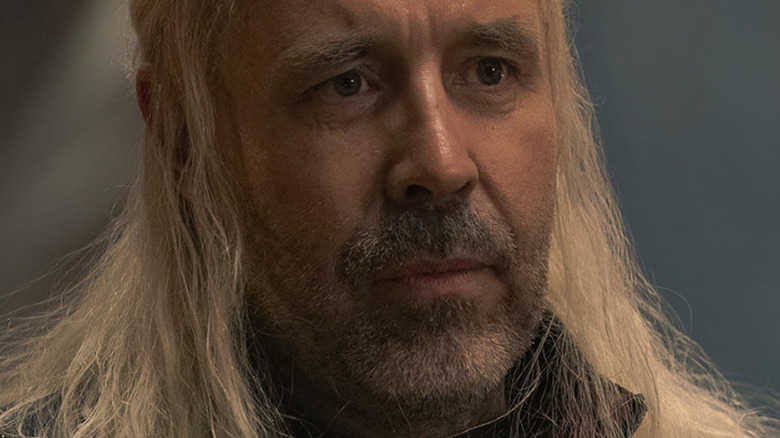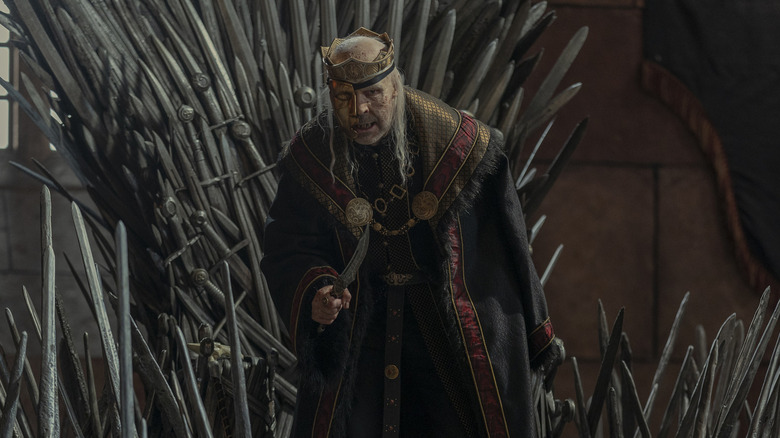House Of The Dragon's Prosthetic Designer Explains The Real-Life Influences For Viserys' Condition
As we gear up for the first season finale of "House of the Dragon," it's interesting to look back on the tumultuous chain of events that led us here. The last episode, titled "The Black Queen," is set to be the culmination of all the violence, backstabbing, and heartbreak that's plagued the Targaryen succession (via IMDb). If you've been watching the show since it premiered, then you know that it is a lot different from "Game of Thrones." For one thing, the timeline of the prequel series is moving forward much more rapidly than its predecessor. Characters are being aged-up left and right, but there are other aspects of the narrative that are integral to demonstrating the passage of time.
The years aren't kind to everyone, but especially not to King Viserys Targaryen, who's practically falling apart at the seams leading up to his death. Played by actor Paddy Considine, Viserys deteriorates quite a bit over the course of Season 1. In the first few installments, Viserys is portrayed as a seasoned ruler but still handsome and regal, even if he does have a few painful sores on his back. However, by the time he draws his last breath in "The Lord of the Tides," the monarch is literally a shell of his former self. It's an alarming transformation, one that Considine shoulders with grace. Thankfully, the show's resident prosthetic designer recently revealed the truth about King Viserys' illness and how the minds behind the show approached the character's demise.
The progression of Viserys' disease was rooted in reality
Transforming Paddy Constantine to represent the many stages of Viserys' condition was a complicated process that involved bald caps galore and endless hours in a trailer where a team of makeup artists were hard at work at making the actor and his body doubles look sickly beyond their years. In an interview with Variety, prosthetics designer Barrie Gower explained how his team developed each stage of Viserys' illness.
"We researched various flesh-eating disorders. Necrosis, leprosy, all kinds of horrible references. Lots of interesting shapes, colors and ulcers," Gower told the outlet, revealing that there were around 7 different phases of the King's devolution. "They could give us a good indication for textures, colors, glosses, how dry things would be. It's very grounded in the real world of horrible diseases."
The extensive research conducted by Gower and his team definitely paid off. The King's rapidly worsening health not only drives the plot forward but offers a poignant metaphor about the price of power. A few errant sores soon become a much worse problem for Viserys when he keeps cutting himself on the Iron Throne. As we move forward, he loses a few fingers, then most of his arm, and eventually, half of his face is eaten away by necrosis. It's easy to see how bad he looks in comparison to some of his peers, like Ser Otto Hightower (Rhys Ifans), who's still in good health at the time of the Viserys' death.

